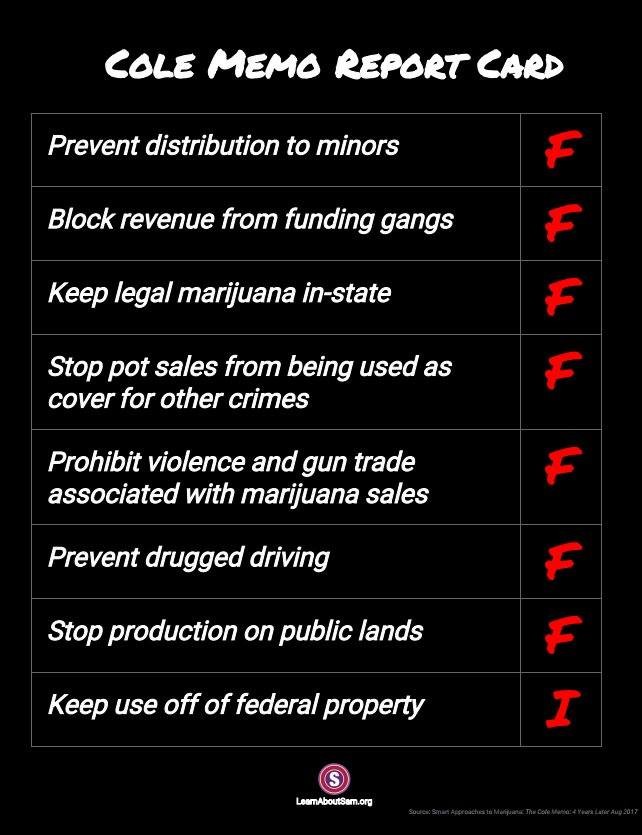
Key Findings:
● According to data from the State of Washington, there have been over 240 violations of legal marijuana sales to minors and of minors frequenting restricted marijuana sales areas as of July 2017. Additionally, research shows youth marijuana use in the state increased between 2010-2012 and 2013-2015. In Colorado, past-month use of marijuana among 12-17 year olds increased significantly – from 9.82% to 12.56% after marijuana retail sales began. The same study notes that teens and adults in Colorado now use marijuana at a higher rate than the rest of the country.
● In March, 2017, a leaked report from the Oregon State Police uncovered evidence from state officials that the black market for marijuana continues to thrive in the state. In June 2017, a massive illegal marijuana trafficking ring was discovered by law enforcement officials, stretching into Kansas, Texas, Nebraska, Ohio and Oklahoma.
● Law enforcement officials in Nebraska and Oklahoma have reported a substantial increase in marijuana flow across state borders into neighboring states. According to data from law enforcement officials, since legalization in 2012 Washington State marijuana has been found to be destined for 38 different states throughout the United States.
● According to Jorge Duque from the Colorado Department of Law, cartels operating in Colorado are now “trading drugs like heroin for marijuana,” and the trade has since opened the door to drug and human trafficking. In Oregon, State Police officials report that criminals are exploiting Oregon’s legal cannabis industry for financial crimes and fraud.
● While crime rates dropped or remained stable in many of the nation’s largest cities, Colorado crime increased – driven by a rise in rape, murder, robbery and auto thefts. In Oregon, state police report that, “Cannabis is a lucrative target for robbery.”
● According to a study published by the American Automobile Association, fatal drugged driving crashes doubled in Washington after the state legalized marijuana. A 2017 study from the University of Colorado found that marijuana-related emergency room visits and visits to its satellite urgent care centers by teens in Colorado more than quadrupled after the state legalized marijuana. In Washington State, poison control calls for marijuana rose between 2012 and 2016.
● In Washington State, 373,778 marijuana plants were found growing illegally on public and private lands between 2012 and 2016. Of the illegal marijuana plants eradicated in 2016, 60% were being cultivated on state land. In June 2017, Colorado officials found more than 7,000 illegal plants on federal land in the state’s San Isabel National Forest. This was the fifth illegal grow found in that area alone since the year marijuana legalization passed, demonstrating legalization has not curbed the problem of grows exploiting public lands. In Oregon, the legalization of marijuana in the state has failed to eliminate illegal growing operations and public lands continue to be exploited despite a legal market.
● Advocates for legal marijuana frequently flout federal laws by possessing and using marijuana on federal properties purportedly in acts of civil disobedience. In January 2017, one group gave away
free marijuana in Washington, D.C. to smoke on the National Mall during the inauguration of President Trump. On April 24th, four activists were arrested after purposely flouting federal law and publicly using marijuana on U.S. Capitol grounds.
Kevin Sabet Makes Statement:

